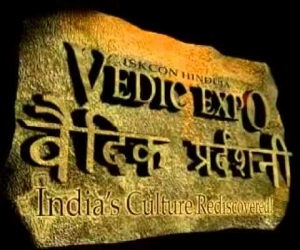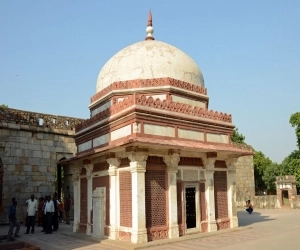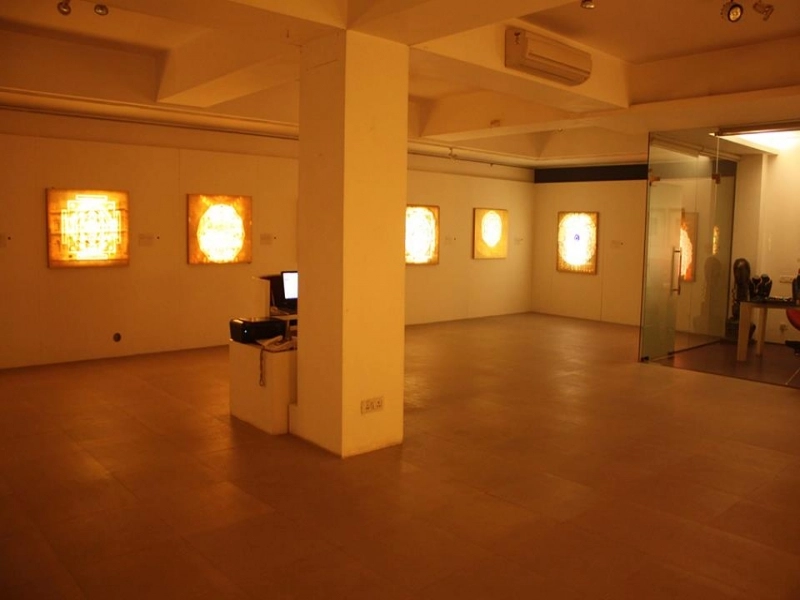Top Attractions in Delhi
Discover the must-visit places in Delhi
About Delhi
About Delhi
Delhi, India's vibrant capital, blends modernity with rich history. It’s a city of contrasts: from the bustling streets of Old Delhi to the well-planned avenues of New Delhi. Iconic sites like the Red Fort and India Gate stand as reminders of its glorious past, while luxury malls and fine dining showcase its modern side. With a cultural diversity that brings together languages, religions, and traditions, Delhi truly reflects the spirit of India.
Keywords: Delhi tourism, capital of India, Old Delhi, New Delhi, Red Fort, India Gate, Delhi history
History of Delhi
Delhi’s rich history spans over 2,000 years. Once known as Indraprastha from the Mahabharata, the city became the seat of power for several empires. It has been ruled by the Mauryas, Mughals, and British, each leaving a profound architectural and cultural legacy. From the Mughal masterpieces like the Red Fort to colonial-era landmarks such as Connaught Place, Delhi’s history is etched in every corner.
Keywords: Delhi history, Mughal era, British rule in Delhi, Indraprastha, Red Fort, Connaught Place
Culture of Delhi
Delhi’s culture is a mix of ancient traditions and modern-day urbanization. The city is known for its festivals, food, and art scenes. Diwali, Holi, and Eid are celebrated with grandeur. The city hosts numerous art exhibitions, theater performances, and music festivals throughout the year, making it a hub for creatives. From Mughlai to street food, Delhi’s culinary landscape is as diverse as its people.
Keywords: Delhi culture, festivals in Delhi, Diwali in Delhi, street food in Delhi, Delhi arts scene, Mughlai food
Top Attractions in Delhi
Delhi is home to some of India's most iconic landmarks:
- Red Fort: A symbol of Mughal power.
- India Gate: Honoring soldiers of World War I.
- Qutub Minar: A UNESCO World Heritage Site.
- Lotus Temple: Famous for its unique architecture. Visitors can also explore bustling markets like Chandni Chowk or relax in the serene gardens of Humayun’s Tomb.
Keywords: Delhi attractions, Red Fort, Qutub Minar, Lotus Temple, India Gate, Chandni Chowk
Eat in Delhi
Delhi is a paradise for food lovers. The city’s street food scene is legendary, with dishes like Chole Bhature, Kebabs, and Chaat reigning supreme. Visit Paranthe Wali Gali for authentic parathas or try high-end restaurants like Bukhara for a gourmet experience. Whether you crave Indian or international cuisine, Delhi has it all.
Keywords: Delhi food, street food in Delhi, best restaurants in Delhi, Chole Bhature, Kebabs, Paranthe Wali Gali
Travel in Delhi
Navigating Delhi is easy with the well-connected Delhi Metro, one of the fastest ways to get around. For local travel, autos, taxis, and ride-hailing services like Uber and Ola are readily available. The Indira Gandhi International Airport connects the city to major destinations worldwide.
Keywords: Delhi Metro, Delhi public transport, Delhi taxis, Indira Gandhi Airport, how to travel in Delhi
Shopping in Delhi
Shopping in Delhi is an adventure. From the bustling Chandni Chowk for traditional attire and spices, to the modern-day luxury malls like Select Citywalk, the city offers something for every budget. Visit Dilli Haat for handicrafts or Sarojini Nagar for affordable fashion.
Keywords: Shopping in Delhi, Chandni Chowk, Sarojini Nagar, Dilli Haat, Delhi malls, Select Citywalk
Nightlife in Delhi
Delhi’s nightlife is vibrant, with upscale lounges, bars, and nightclubs. Hauz Khas Village and Connaught Place are popular spots for nightlife, offering everything from chic bars to live music venues. Whether you're into dance clubs or casual evening drinks, Delhi offers a variety of experiences for night owls.
Keywords: Delhi nightlife, bars in Delhi, nightclubs in Delhi, Hauz Khas nightlife, Connaught Place
Where to Stay in Delhi
Delhi offers accommodation options for every traveler. Luxury hotels like The Leela Palace and The Oberoi provide opulent stays, while budget-friendly guesthouses can be found in areas like Paharganj and Karol Bagh. Connaught Place is ideal for tourists seeking centrally located hotels.
Keywords: Where to stay in Delhi, best hotels in Delhi, budget hotels in Delhi, luxury hotels in Delhi, Connaught Place hotels
Things to Do in Delhi
Explore heritage walks around Old Delhi or enjoy a street food tour. Take a rickshaw ride through Chandni Chowk or visit one of the many museums like the National Museum. Experience cultural performances at the India Habitat Centre or shop for handicrafts at Dilli Haat.
Keywords: Things to do in Delhi, Delhi tours, heritage walks, Delhi street food tour, National Museum
Things to Not Do in Delhi
Avoid drinking tap water; always opt for bottled water. Be cautious while using public transportation late at night. When shopping in local markets, be ready to bargain. Also, avoid unauthorized guides or unregulated taxis to prevent scams.
Keywords: What not to do in Delhi, Delhi safety tips, Delhi scams, Delhi travel advice
Tips for Visitors to Delhi
Delhi can be overwhelming, so it’s best to plan your day ahead. Always carry a map or use a navigation app. The summers can be harsh, so stay hydrated. Respect local customs, especially in religious sites, and dress modestly.
Keywords: Delhi travel tips, visitor guide to Delhi, Delhi weather, Delhi customs, Delhi travel advice
Top Trending Attractions in Delhi
How to Reach Delhi
Map of Delhi
Frequently Asked Questions
What is the best time to visit Delhi?
The best time to visit depends on weather and local events.
What are the must-visit attractions in Delhi?
Explore the top attractions listed in the Attractions section.
How can I get around Delhi?
Public transport, taxis, and walking are common options.
Quick Facts
Delhi
Population :18980000
Languages :Hindi, English, Punjabi, Urdu
Pincode :1100XX
Altitude :293 Meter
STD Code :011
Website : delhi.gov.in
Travel Insight

A Collector's Dream If you are nostalgic about the music of the ...

1. Camping and White River Rafting in Rishikesh Rishikesh is a ...
Top travel News
Essential India
Your trip to India is incomplete if you have not...- Danced to a punjabi number
- Tasted the spicy street food
- Picked up a local Rajasthani dress and jutti (footwear)
- Tried an ayurvedic full-body massage
- Watched a classical dance performance
- Taken a train











